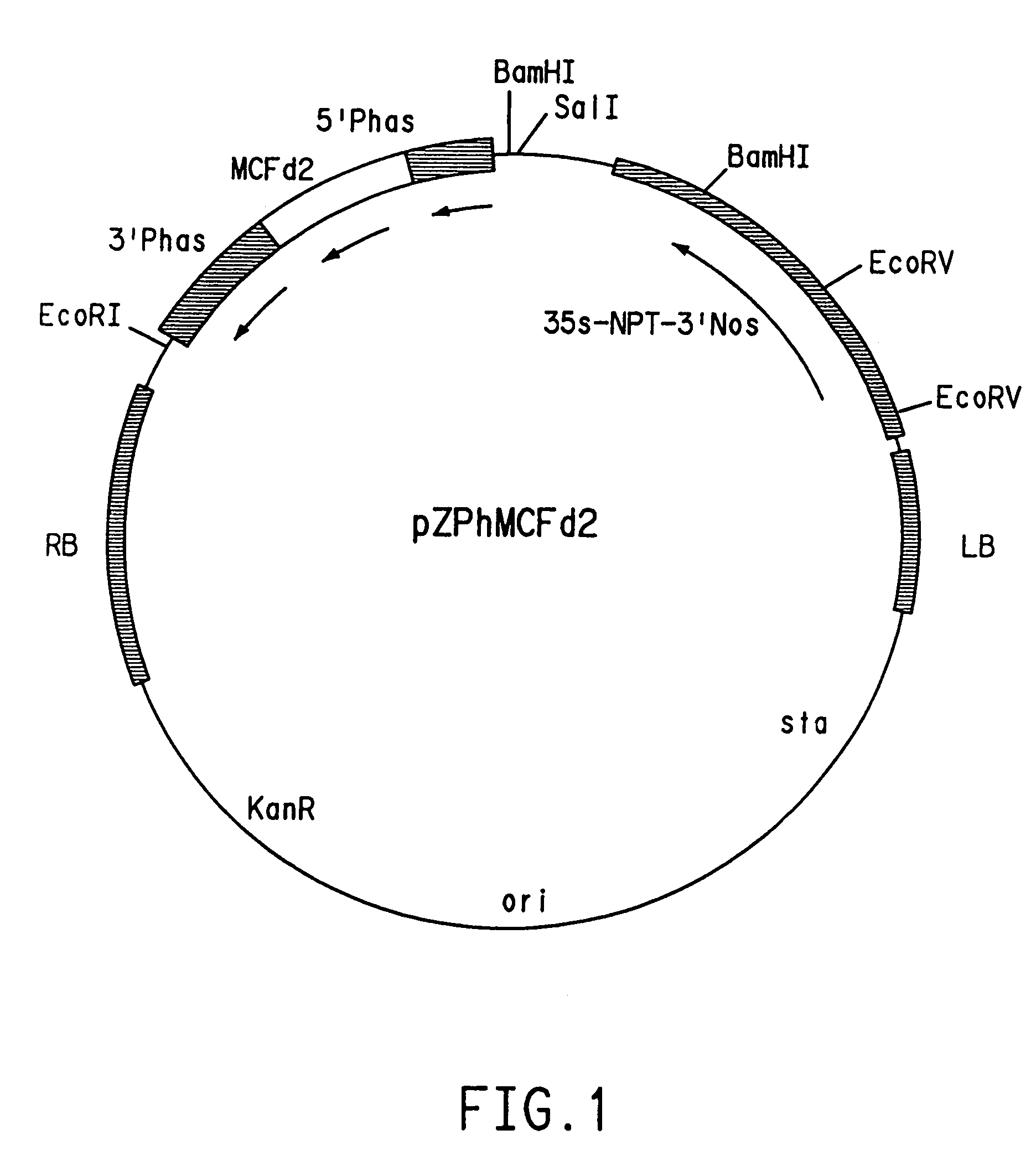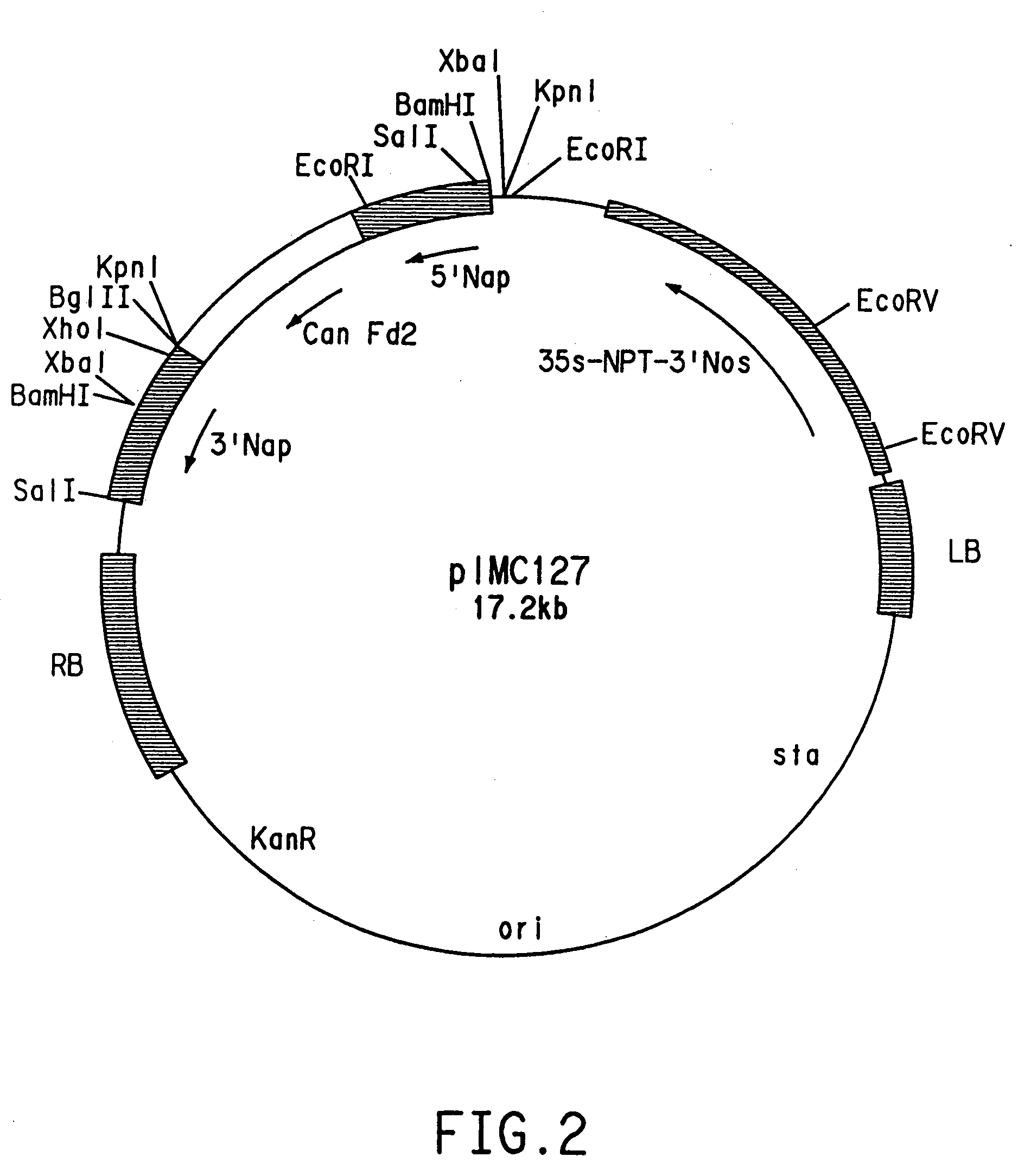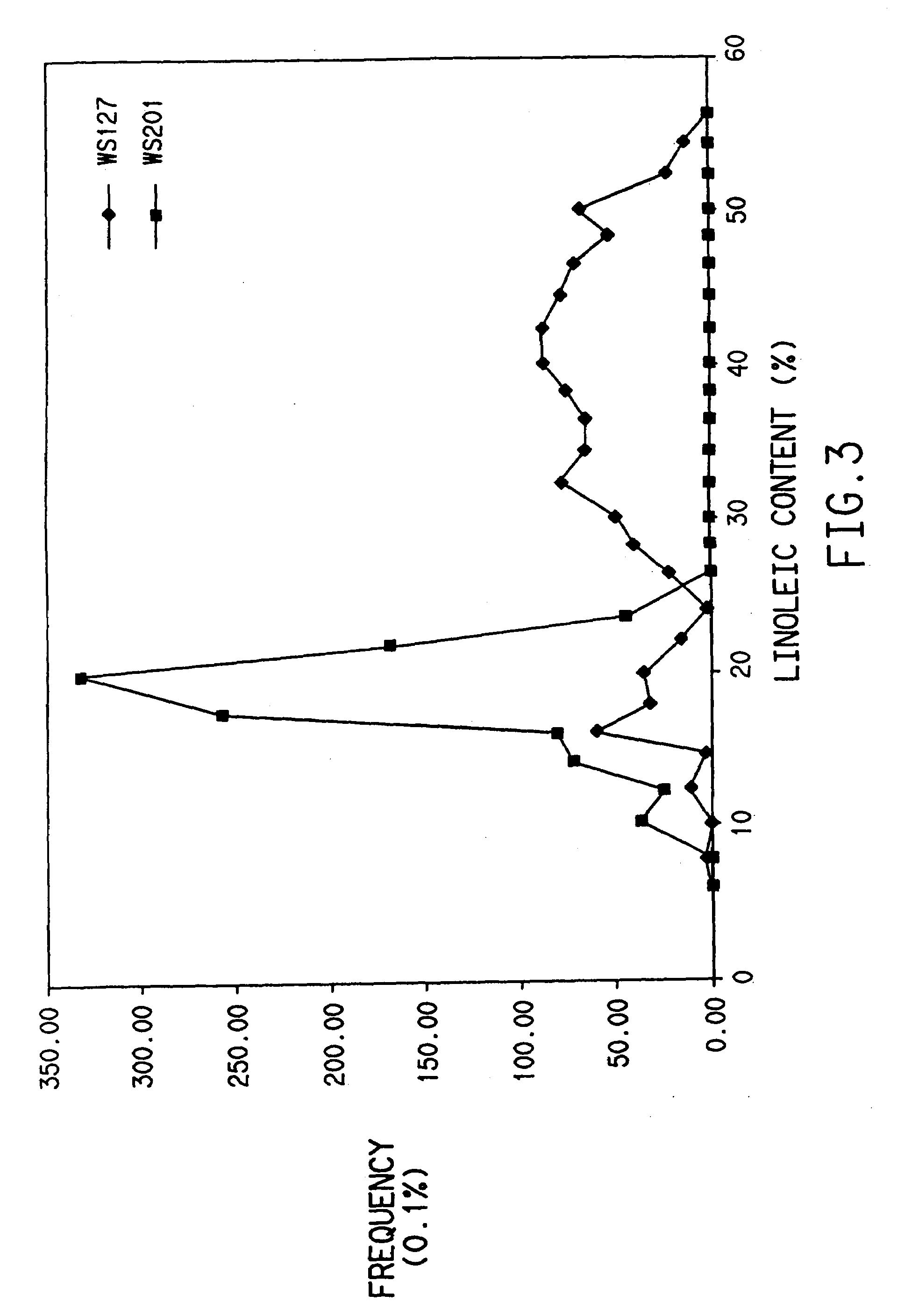Methods for increasing oleic acid content in seeds from transgenic plants containing a mutant delta 12 desaturase
a technology of delta-12 and transgenic plants, which is applied in the field of nucleic acid fragments encoding fatty acid desaturase enzymes, can solve the problems of no teachings concerning plants having seed-specific expression of mutant delta-12, and no methods for altering the fatty acid composition of plants using nucleic aced constructs
- Summary
- Abstract
- Description
- Claims
- Application Information
AI Technical Summary
Benefits of technology
Problems solved by technology
Method used
Image
Examples
example 1
Sequences of Mutant Delta-12 Fatty Acid Desaturases from B. Napus
[0086]Primers specific for the FAD2 structural gene were used to clone the entire open reading frame (ORF) of the D and F forms of the gene by reverse transcription-polymerase chain reaction (RT-PCR). The sequences of the primers used for isolation of the D form ORF of B. napus FAD2 gene are
[0087]
5′-CATGGGTGCAGGTGGAAGAATGC-3′(SEQ ID NO: 9); and5′-GTTTCTTCTTTGCTTCATAAC-3′(SEQ ID NO: 10).
The sequences of the primers used to clone the F form ORF of B. napus FAD2 gene are
[0088]
5′-CATGGGTGCAGGTGGAAGAATGC3′(SEQ ID NO: 11); and5′-TCTTTCACCATCATCATATC-3′(SEQ ID NO: 12).
[0089]RNA from seeds of three lines, IMC129, Q508 and Westar, was isolated by an acid guanidinium thiocyanate-phenol-chloroform extraction method (Chomczynski and Sacchi, 1987; Analytical Biochemistry 162, 156–159, 1987). The total RNA was used as a template for reverse transcription and PCR amplification by RNA PCR kit (Perkin Elm r). The RT-PCR amplified frag...
example 2
Gene-Specific Oligonucleotide Markers for the Mutant and Wild Type Delta-12 Fatty Acid Desaturase Genes
[0095]The D form of IMC129 fad2 gene contains a G to A transversion at nucleotide 316 from the translation initiation codon. Two short oligonucleotide upstream (5′) primers, based on the single base change (G to A) between the D form of the IMC129 and wild type FAD2 genes, were designed. The sequences of the upstream (5′) primers are as follows:
[0096]
5′ gene-specific primer for wild type FAD2-D:5′-GTCTGGGTCATAGCCCACG-3′(SEQ ID NO: 13); and5′ gene specific primer for IMC129 fad2-d:5′-GTCTGGGTCATAGCCCACA-3′(SEQ ID NO: 14).
A common downstream (3′) primer (SEQ ID NO:10) specific for the D form of the FAD2 gene was used for both IMC129 and wild type FAD2 genes. These gene-specific primers were used in a DNA based PCR diagnostic assay to genotype plants carrying the mutant and / or wild type FAD2 genes.
[0097]Genomic DNA was isolated from leaf tissue of IMC129 and Westar plants, and used as...
example 3
Constructs for Dominant Negative Suppression of Delta-12 Fatty Acid Desaturase
[0100]The vector pZS212 was used to construct plasmids for dominant negative suppression experiments. One construct was prepared by inserting the full-length mutant D gene coding sequence (nucleotides 1 to 1155 of SEQ ID NO:3) in sense orientation between the phaseolin promoter and phaseolin 3′ poly A region of plasmid pCW108. The pCW108 vector contains the bean phaseolin promoter and 3′ untranslated region and was derived from the commercially available pUC18 plasmid (Gibco-BRL) via plasmids AS3 and pCW104. Plasmid AS3 contains 495 base pairs of the bean (Phaseolus vulgaris) phaseolin (7S seed storage protein) promoter starting with 5′-TGGTCTTTTGGT-3′ (SEQ ID NO:56) followed by the entire 1175 base pairs of the 3′ untranslated region of the same gene (see sequence descriptions in Doyle et al., (1986) J. Biol. Chem. 261:9228–9238 and Slightom et al., (1983) Proc. Natl. Acad. Sci. USA, 80:1897–1901. Further...
PUM
| Property | Measurement | Unit |
|---|---|---|
| denaturing temperature | aaaaa | aaaaa |
| temperature | aaaaa | aaaaa |
| temperature | aaaaa | aaaaa |
Abstract
Description
Claims
Application Information
 Login to View More
Login to View More - R&D
- Intellectual Property
- Life Sciences
- Materials
- Tech Scout
- Unparalleled Data Quality
- Higher Quality Content
- 60% Fewer Hallucinations
Browse by: Latest US Patents, China's latest patents, Technical Efficacy Thesaurus, Application Domain, Technology Topic, Popular Technical Reports.
© 2025 PatSnap. All rights reserved.Legal|Privacy policy|Modern Slavery Act Transparency Statement|Sitemap|About US| Contact US: help@patsnap.com



